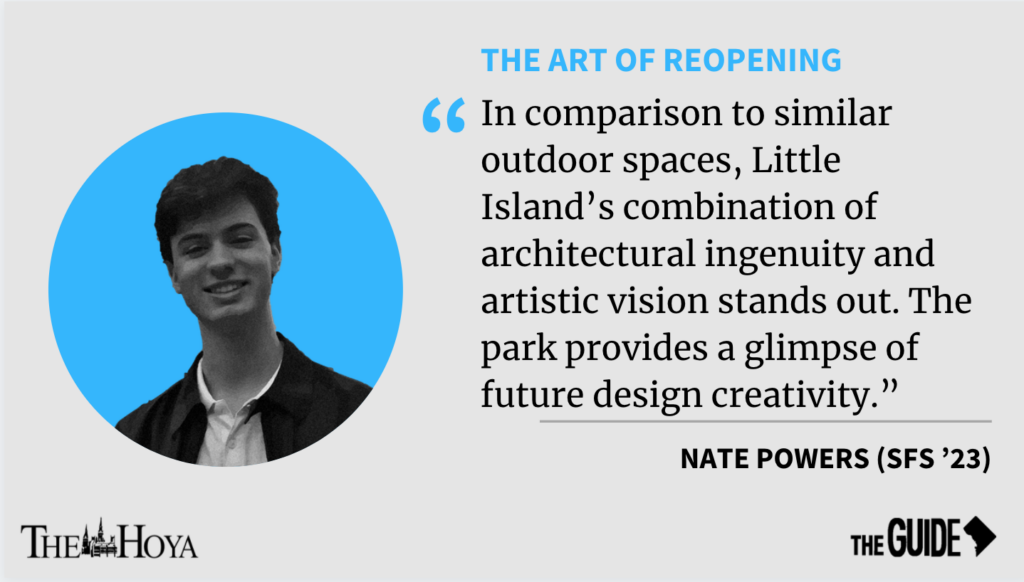Throughout the past year and a half of COVID-19 pandemic life, people have paid special attention to finding ways to safely gather outside of the house. With this newfound emphasis on al fresco events, many have turned to public parks and gardens for socializing.
Even as most of the United States eases restrictions this summer, many individuals are taking all available opportunities to spend time outside, especially in high-density cities like New York City. There has never been a more ideal moment to find creative ways to spend time outside, and New York has recently added its most creative outdoor setting yet: Little Island.
The brainchild of developer Barry Diller, the $260 million Little Island finally opened its gates to the public just a few months ago after years of legal obstacles from city hall. The human-made park is 2.4 acres, located at Pier 55 on the Hudson River, close to Manhattan’s Meatpacking District and sitting just off the Hudson River. Diller and his wife, Diane von Furstenberg, one of the world’s leading women in fashion, have agreed to support the park financially for the next two decades.
Little Island features distinct landscaping that includes concrete terrascaping and an urban amphitheater that can seat close to 700 patrons. The park is situated on over 100 concrete tulip-like structures, speaking to the artistic vision and detail imagined by the park’s designers.
Produced by the engineering firm Arup and designed by Mathews Nielsen Landscape Architects in collaboration with British company Heatherwick Studio, Little Island is part of a revolution in outdoor space design. Rather than containing just greenery, the park uses the surrounding area and modern artistic techniques to create a truly unique and beautiful space.
The park plans to host weekly art events throughout the summer, including live music, dancing and events for families. Many of the artists will also perform a Weekly Series concert that will include features on weekend nights and during the afternoon on some weekdays.
Open from 6 a.m. to 1 a.m., the space offers timed tickets from 12 p.m. and after to accommodate large crowds, while still allowing for nonticketed entry in the mornings. The park also hopes to work with local community organizers to provide tickets for events to underprivileged New Yorkers and their families.
The unveiling of Little Island comes at a particularly significant time for the city. Just over a year ago, New York was a global epicenter for COVID-19, with some of the highest initial death counts in the world. Despite its bounceback from the brink, New York’s economy is still largely at risk, and will undoubtedly remain so for years. The city’s unemployment rate remains incredibly high, having lost the largest proportion of jobs of any major city in the United States.
Economic recovery has been particularly difficult for New York, especially given decreased traffic in office buildings and nearby retail stores, which fill the Meatpacking District and other commercial areas. Hopefully the demand for outdoor spaces like Little Island can attract tourists and residents alike to the area, propelling New York out of the COVID-19 slump.
More venues that combine outdoor space and artistry can be expected in other cities and certainly in other areas of New York. New York’s Lincoln Center has already seen a revamping of its outdoor plaza with its conversion into a green space for the summer. Similar to Little Island, the space will hold outdoor concerts and performances set on over 10,000 square feet of artificial turf that resembles a grassy skatepark.
In comparison to similar outdoor spaces, Little Island’s combination of architectural ingenuity and artistic vision stands out. The park provides a glimpse of future design creativity. The COVID-19 pandemic has forced a reconsideration of almost every aspect of what daily life means to us, and parks are no exception.














